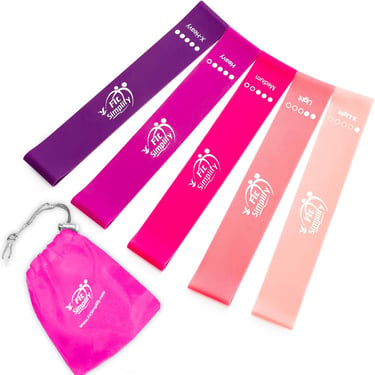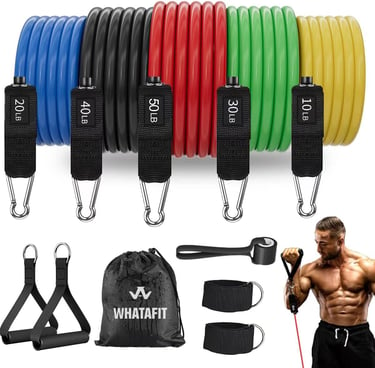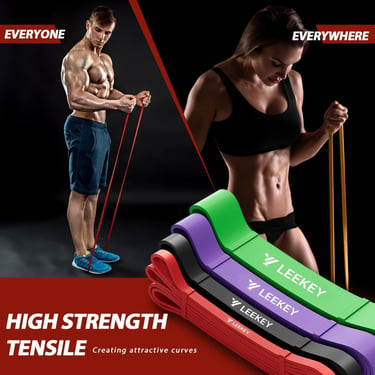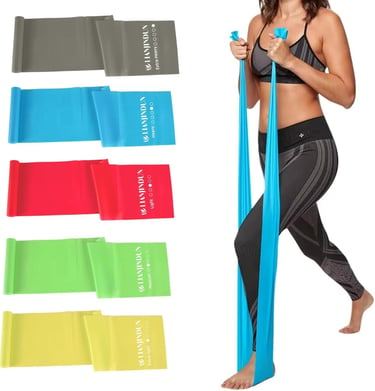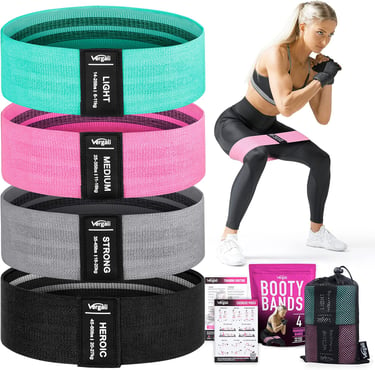
The Ultimate Guide to Resistance Bands: Types, Materials, and How to Choose the Right One
Resistance bands are one of the most versatile, portable, and budget-friendly tools for strength training, rehabilitation, and mobility work. With so many shapes, materials, and resistance levels available, it’s important to understand the differences so you can choose the right band for your goals. In this guide, we’ll break down the main types of resistance bands, their materials, resistance levels, and key factors to consider before buying or using them.
9/30/2025

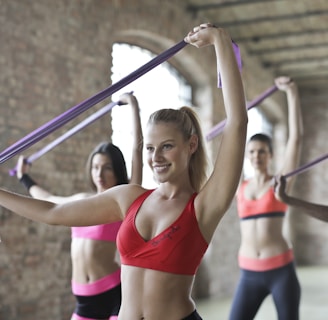
Types of Resistance Band
1. Loop Bands (Mini Bands/Booty Bands)
Description: Continuous loops that come in varying lengths and widths.
Best For: Lower body movements like hip abductions, glute activation, squats, and lateral walks.
Pro Tip: Fabric loop bands are more stable and won’t roll up, making them great for glute and leg workouts.
2. Tube Bands
Description: Long elastic tubes, often with handle attachments.
Best For: General strength training—these bands mimic free-weight or machine movements for both upper and lower body.
Pro Tip: Choose handles for upper body workouts, or handle-free for versatility.
Description: Long, flat, and flexible bands without handles.
Best For: Stretching, rehabilitation, pilates, and full-body exercises where you need a consistent resistance across a large range of motion.
Description: Heavy-duty closed-loop bands, thicker than mini bands.
Best For: Assisted pull-ups, dips, and explosive power exercises.
Material & Form Factors
Latex: Offers significant stretch and is excellent for explosive moves, joint stability, and flexibility training.
Fabric: Durable, comfortable, and prevents rolling during exercises—especially useful for lower body work.
Length: Longer bands provide more versatility for full-body workouts and stretching; shorter ones are great for targeted isolation moves.
Resistance Levels
Resistance bands come in different levels, usually indicated by color coding:
Lighter colors (yellow, red): Light resistance, best for beginners, warm-ups, or rehabilitation.
Darker colors (green, black, blue): Heavier resistance, better for strength, power, or experienced athletes.
How to choose the right resistance:
If the last few reps of your set are too easy → switch to a heavier band.
If your form breaks down and you can’t finish the reps → use a lighter band.
Just right = the last reps are challenging, but you can maintain proper form.
Factors to Consider When Choosing a Band
Your Fitness Level
Beginners should start light and progress gradually.
Advanced athletes may need multiple bands to cover strength and endurance work.
Exercise Type
A short band may be perfect for glute bridges.
A long pull-up band works better for assisted pull-ups or rows.
Rep Range
Low reps (4–6): Choose a band that feels tough right from the start.
High reps (15–20): Pick a band that’s manageable but still challenging at the end.
Band Thickness/Width
Thicker = more resistance and stability.
Thinner = lighter, more flexible resistance.
Band Length
Short = focused, isolated exercises.
Long = versatility for full-body training.
How to Test a Band
Select a band you think might match the exercise.
Perform a few controlled reps.
Evaluate the difficulty:
Too easy → increase resistance.
Too hard → lower resistance.
Just right → last reps are tough but form stays solid.
Tips for Beginners
Buy a set: Having multiple bands gives you flexibility for different exercises and progression.
Check your bands: Always inspect for cracks or tears before use.
Match your goals:
Strength → heavier bands for low reps.
Endurance or recovery → lighter bands for high reps or mobility work.
Final Thoughts
Resistance bands are an effective tool for every fitness level, from beginners to athletes. Whether you want to build strength, improve mobility, or rehab an injury, the right band can help you get there. The key is choosing the proper type, material, and resistance level for your goals.
Start light, listen to your body, and progress gradually—you’ll be surprised how much strength and control a simple band can build.
Loop Bands
Tube Bands
Flat/Therapy bands
Pull-Up Bands

